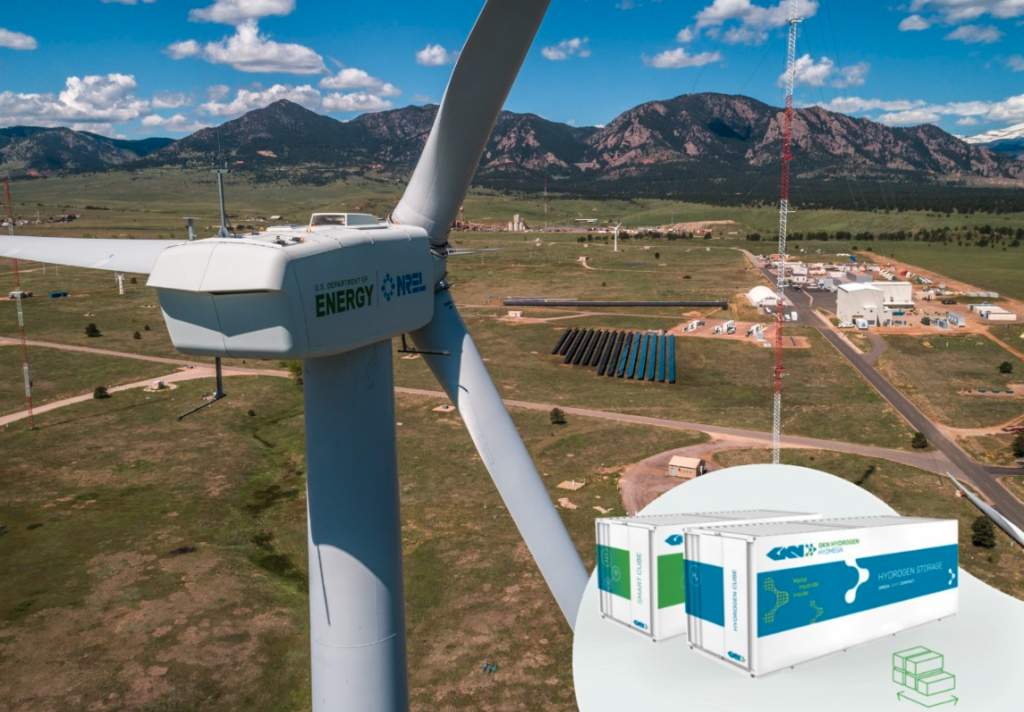
Hydrogen storage company GKN Hydrogen, gas utility SoCalGas and the US Department of Energy’s National Renewable Energy Laboratory are collaborating on a new green hydrogen storage solution.
The three will work together to deploy two of GKN’s ‘HY2MEGA’ green hydrogen storage subsystems on NREL’s Flatirons Campus in Colorado, US.
They will connect to an existing electrolyser and fuel cell at the ARIES (Advanced Research on Integrated Energy Systems) facility at Flatirons. The electrolyser will use renewable energy sources, possibly wind based on photos provided in the press release, to produce hydrogen for storage in GKN’s storage solution.
HY2MEGA stores hydrogen in a solid state under low pressure, which can then be converted to produce electricity. The two systems will store a total of 500kgs of hydrogen on-site and GKN said its solution can enable long duration clean energy storage, providing resilient power in case of widespread outages.
The three-year project is set to launch by the end of 2022. The Department of Energy (DOE) provided US$1.7 million in funding while SoCalGas, the US’ largest gas distribution utility, provided another US$400,000 for the project.
“This project is exactly what the ARIES platform was designed for: demonstrate the benefits of a new technology that efficiently stores energy produced from renewable electricity,” said Katherine Hurst, group manager and research scientist at NREL. “It brings together a national laboratory, a clean energy technology developer, and a large utility to work on solutions that help decarbonize the power grid.”
ARIES is a research platform that tests new energy technologies up to the 20MW-level with the help of an 8-petaflop supercomputer. Within energy storage, it particularly looks at connecting multiple different technologies.
“SoCalGas will leverage the large-scale hydrogen storage capabilities of GKN Hydrogen’s HY2MEGA from this project to help accelerate the commercialization and deployment of green hydrogen projects,” said Neil Navin, vice president of clean energy innovations at SoCalGas.
The project is fairly unique in that it is exploring green hydrogen’s potential for power-to-gas-to-power electricity energy storage.
Most big green hydrogen projects are primarily seeking to produce green hydrogen as a feedstock for industry, followed by applications in transportation and blending with natural gas in combined-cycle gas turbine (CCGT) plants. The ACES Delta project in Utah, whose developers describe it as the largest green hydrogen project under construction anywhere in the world, is an example of the latter.
The economics of using green hydrogen for power-to-gas-to-power are far from proven due to the very low round-trip efficiency of around 33%. This is much lower than other energy storage technologies, including a form of advanced compressed air storage developed for commercialisation by Hydrostor, at around 65% (as opposed to around 40% for conventional compressed air) or Energy Dome’s recently launched ‘CO2 Battery’, c.80% for pumped hydro, 85% for some thermal storage solutions and 90%-plus for lithium-ion.